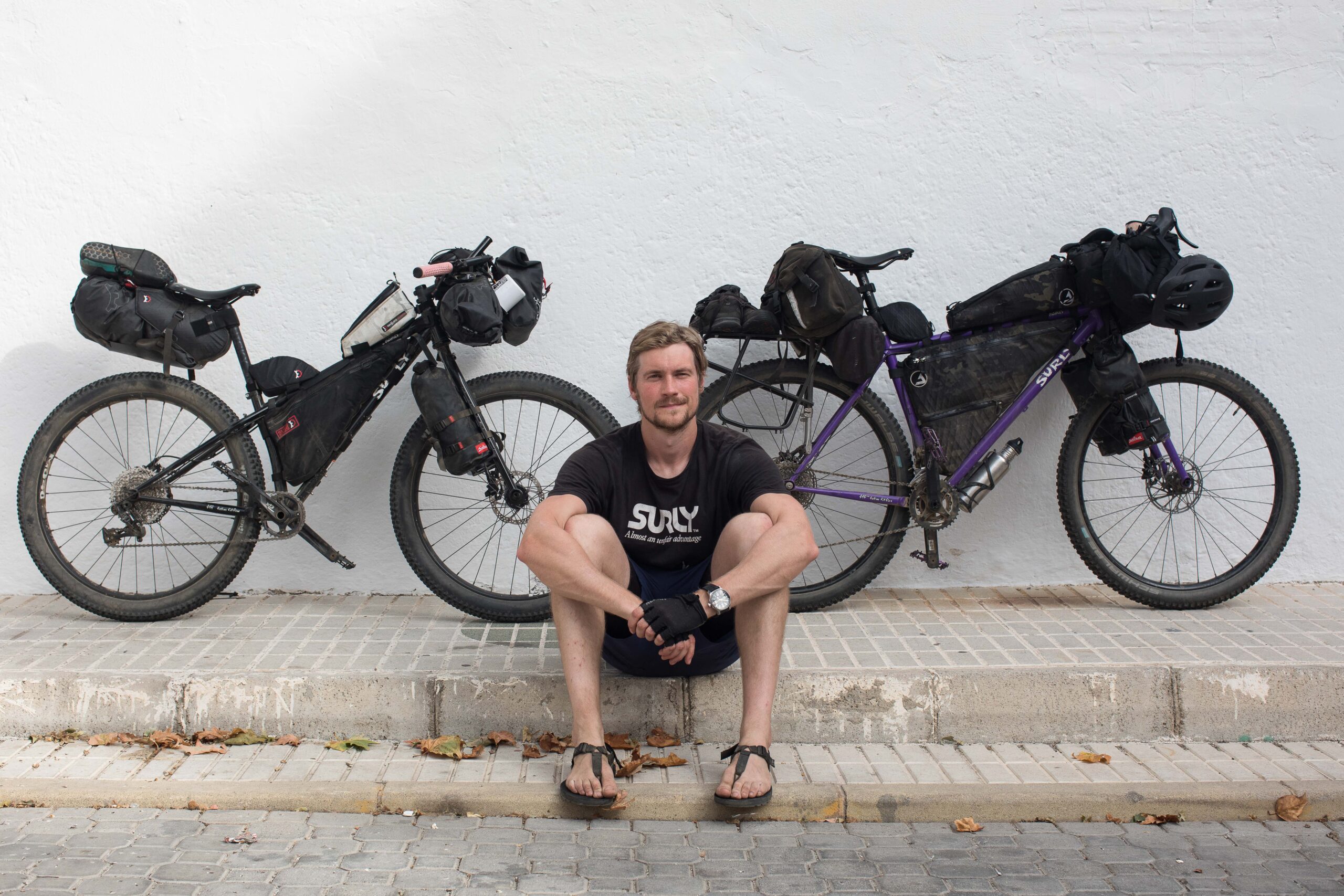It’s a common misconception that overlanding is restricted to the world of internal combustion when in reality, it more broadly refers to self-reliant travel to remote destinations or to “travel a long distance over land.” As someone who lives in an overlanding truck and loves vehicle exploration, I thought it would be interesting to discuss why I continue to make bikepacking adventures a priority.
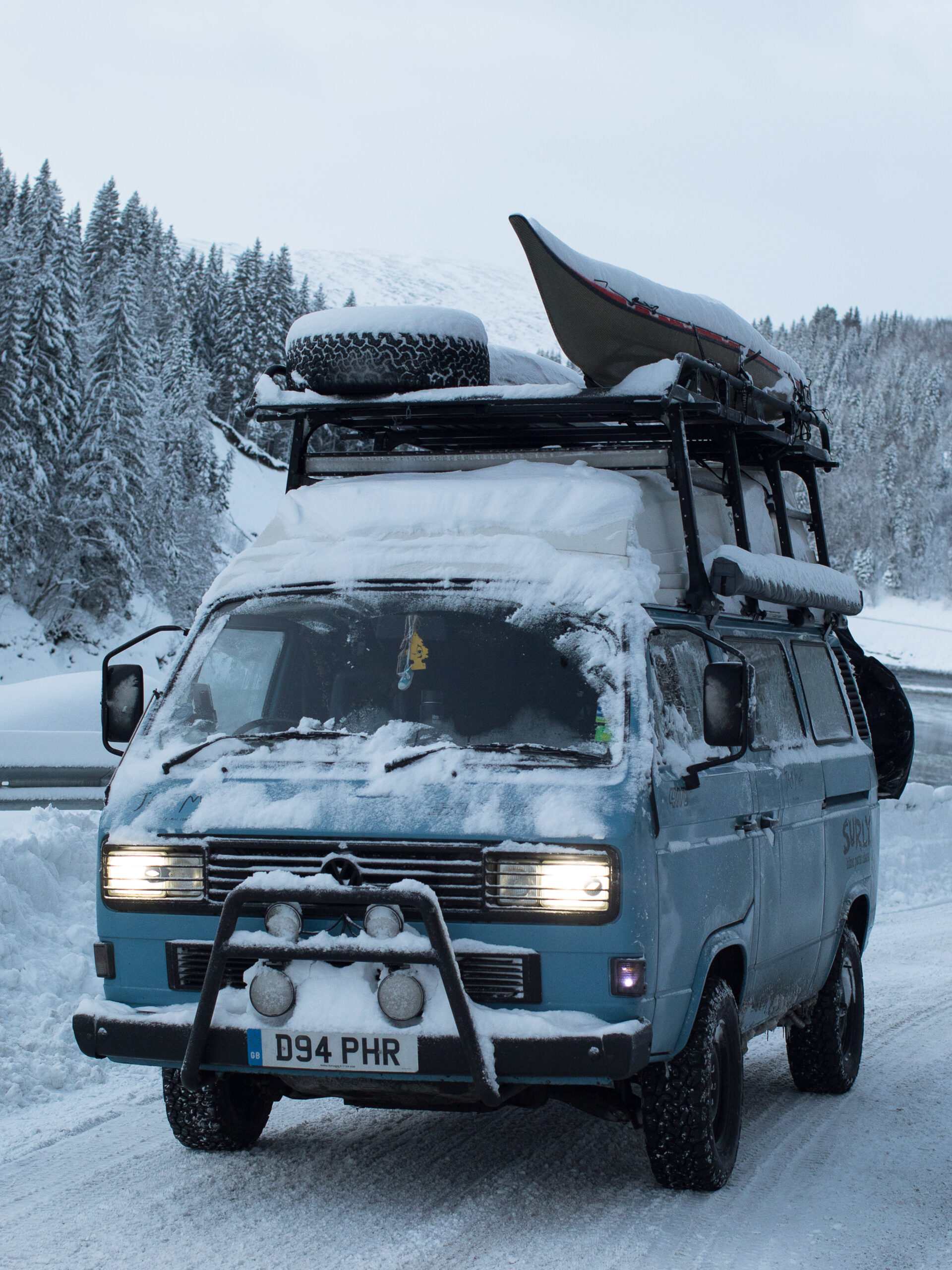
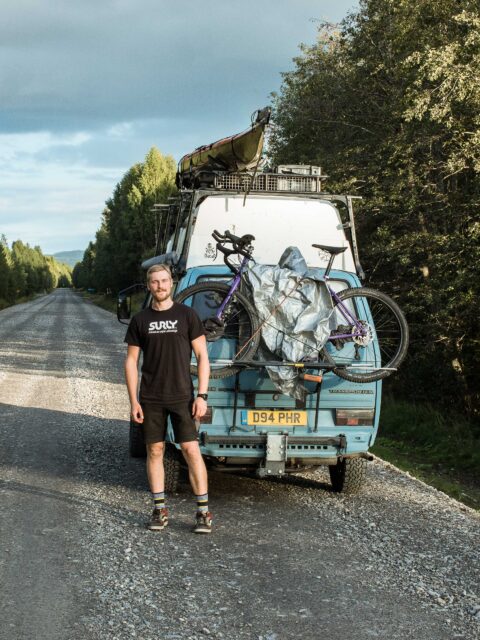
Bikepacking/adventure cycling is just about the cheapest form of travel, besides backpacking. Yet, the bicycle covers distance, on the flat, five or six times faster than walking. Bike bags and panniers make carrying luggage a relatively seamless enterprise whilst offering considerable load capacity for remote exploration. I often think of the bicycle as the “forgotten overlander.” After all, it sits perfectly in the traditional overland lineup, i.e., truck, motorbike, and finally, bicycle.
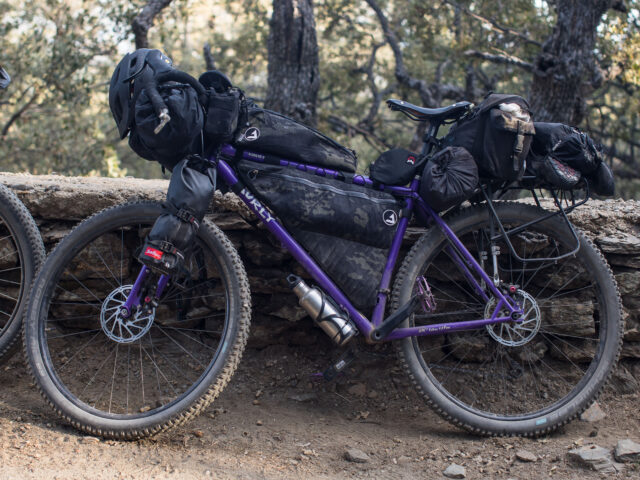
In other words, this is a form of transport used by many to explore the world’s most remote regions, and the only real difference is the absence of internal combustion. The biggest cost for vehicles is fuel, whereas the bicycle simply requires the rider is well fed (which may incur a slight increase in food costs). A bicycle fit for exploration can be picked up cheaply, and a generic steel 26-inch mountain bike remains an excellent option for overland adventures. Riding a bicycle doesn’t require a license, and road tax and insurance are optional (but recommended). Bicycle maintenance is also, for the most part, straightforward. Consequently, general servicing and roadside repairs can be carried out with relative ease, and there are many free bike maintenance apps that are useful should you require additional instruction. All-in-all, bikepacking is a great access point into overlanding, which isn’t to say it offers a “budget experience.”
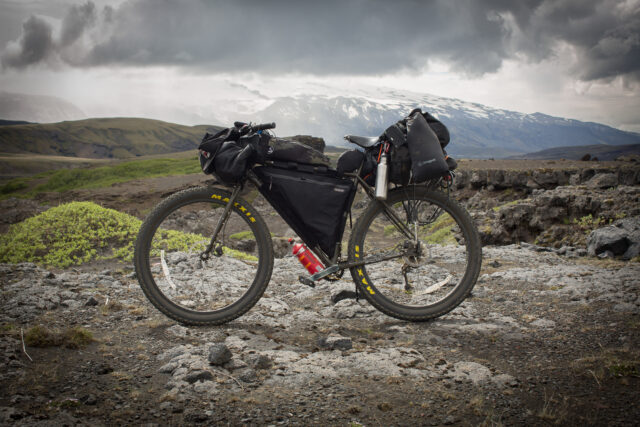
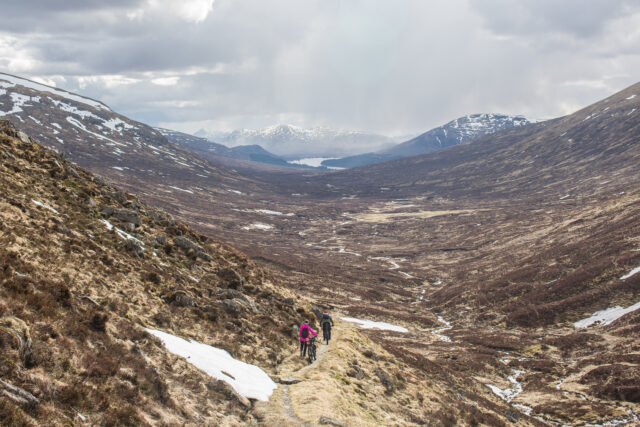
For me, overlanding started with bikepacking, and 10 years later, it remains my favourite form of explorative travel. I can trace my life on the road back to a single moment I spent on a mountainside in Germany’s Black Forest or Schwarzwald. It was on a high pass, looking out over the forest below, that I realised I was truly happy. I suddenly understood that everything I needed to be content and complete could be packed on a bicycle. In modern life, we’re often made to feel lacking in some way or encouraged to achieve more; it’s all too easy to compare ourselves to others and never feel content with present circumstances. It was a freeing sensation to recognise I already had everything I needed to be completely satisfied in life and that meaningful success could look so simple. This memory may seem a little dramatic, but something clicked that day, an immense weight was lifted, and it sparked a new minimalist approach to life that has dictated everything I’ve done since.
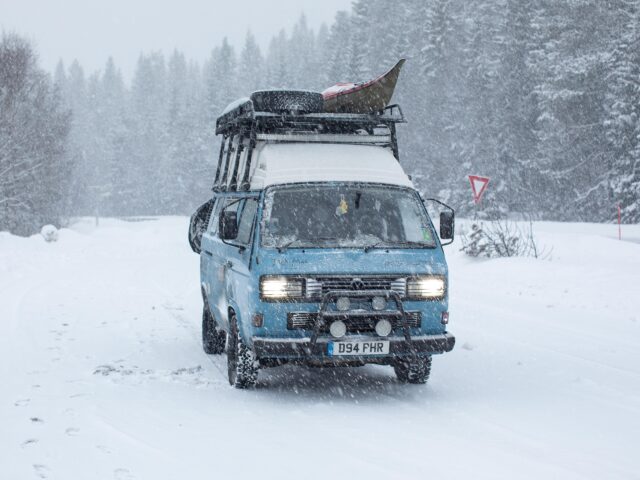
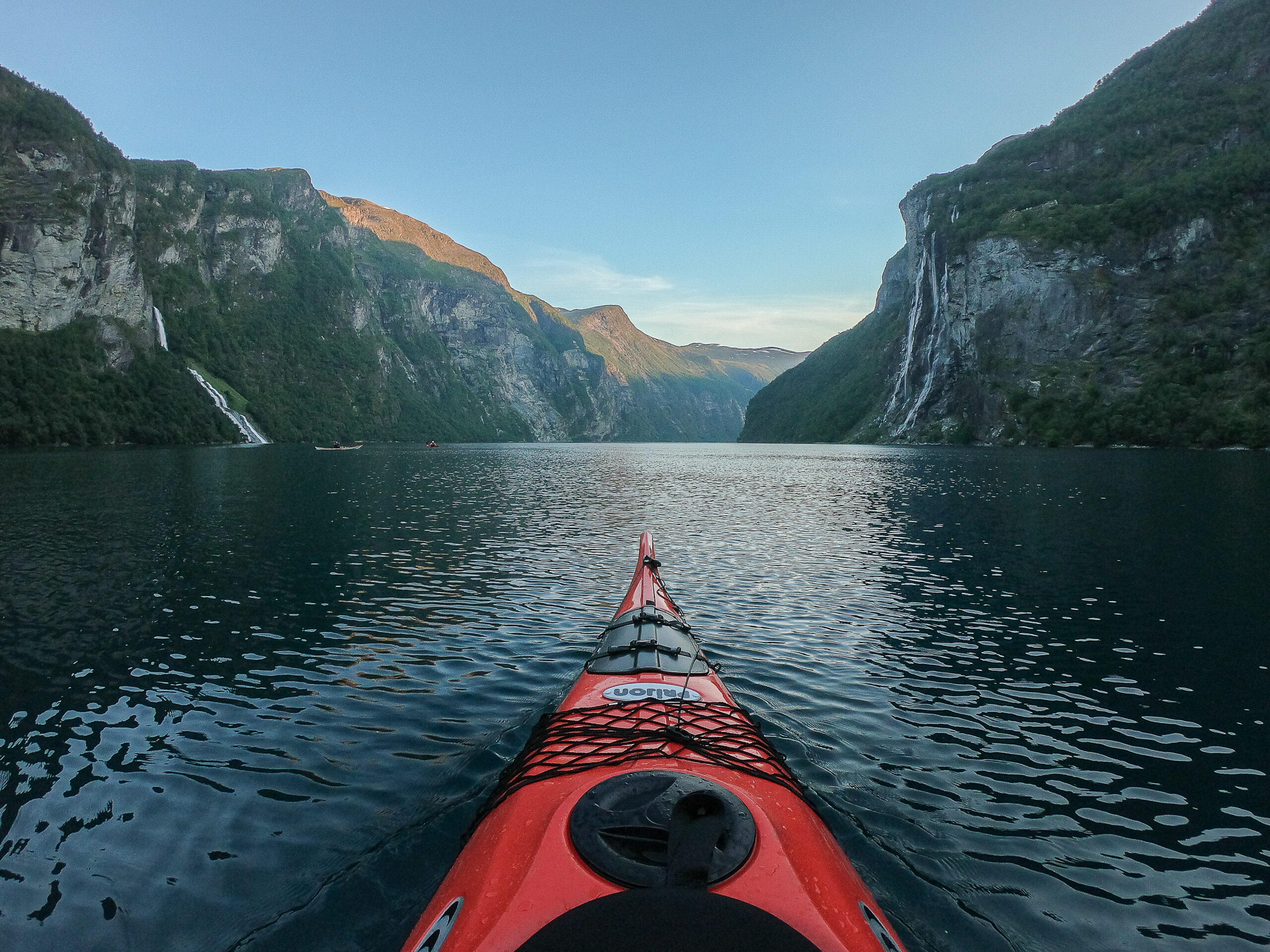
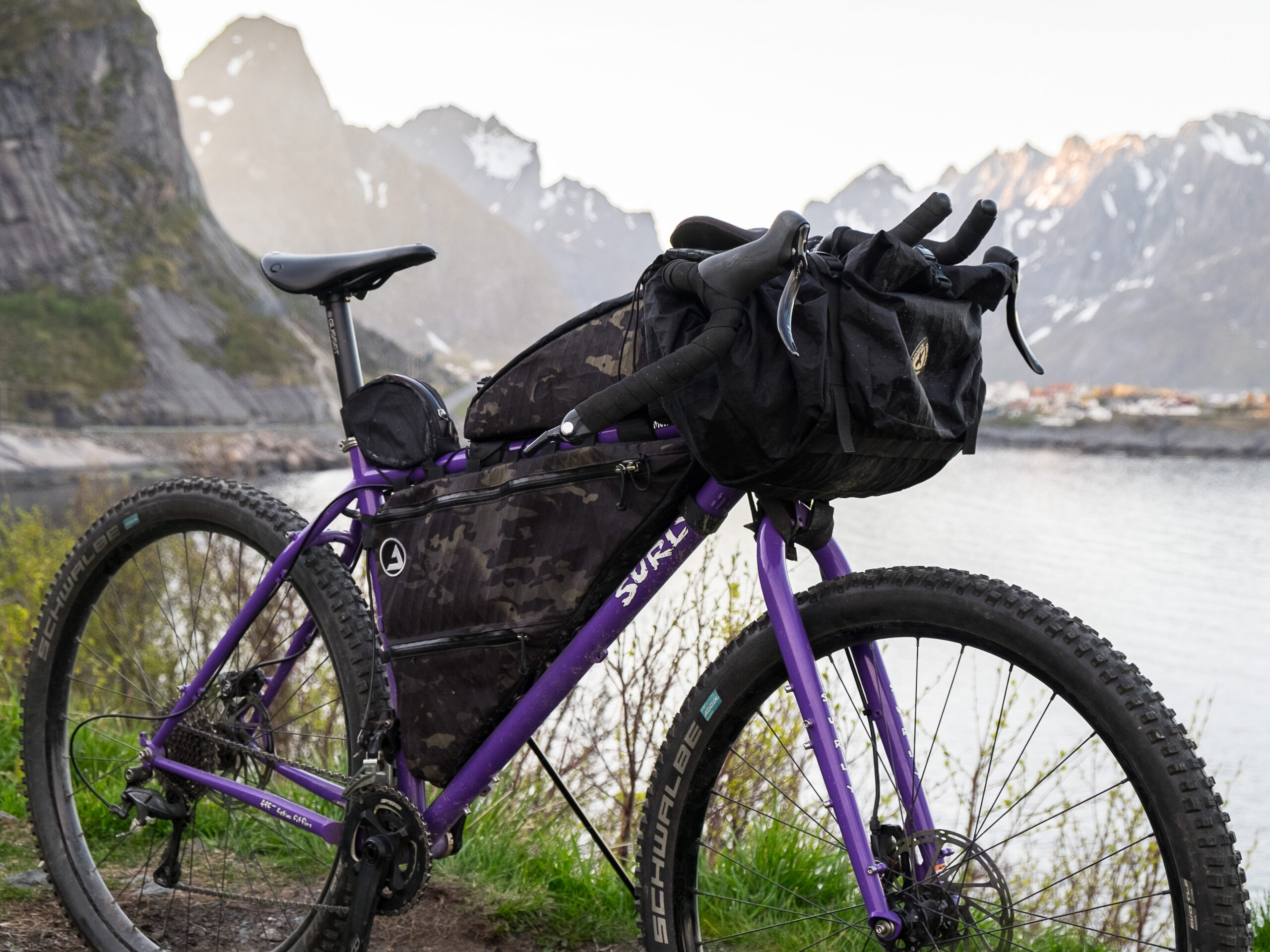
Upon returning to the UK, I sold most of my things and transitioned to life on the road, living full-time in my Syncro, prioritising living and working outdoors above anything else. Vehicle adventures became a big part of my life, but I continued to yearn for the raw simplicity of pedal-driven overlanding. Bikepacking is a form of overlanding that’s so pure, almost mediative, requiring a fraction of the equipment necessary for extended vehicle travel—the slower pace allows the rider to fully absorb every mile. Riding a bike, you’re part of the machine, and there’s something about being physically bound to the process, distance passing under your own steam, that provides a sense of achievement you don’t get from sticking your foot on the gas pedal. When it comes to all-terrain capabilities, bikepacking is in a league of its own.

I think it’s fair to say that many people assume that “bigger is better” in the world of overland vehicles and that to see the world, you need some ginormous expedition truck. Sure, larger trucks have their plus points, and no vehicle is perfect, but if I’ve learnt one thing from my time travelling is that overlanding is about efficiency. In other words, you should aim to balance size, economy, weight, capability, reliability, etc. And generally, this means modest-sized vehicles are advantageous. Hence, when it comes to go-anywhere capability and all-round efficiency, the bicycle is unbeatable. The bigger the vehicle footprint, the more carefully you’ll need to plan your routes, whereas the bicycle can traverse just about anywhere. Adventure cycling allows the traveller to be more ambitious with their trips, venture off-piste, traverse hiking trails, and avoid roads altogether. A motorbike is capable, but even the lightest unladen dirt bikes are too heavy to carry up a mountainside. A plus bicycle, like my Surly ECR, can travel over almost any surface; when the trail ends, it can be thrown over your shoulders and carried. Bikepacking is a fantastic way to explore remote regions without the fear of getting stuck or being unable to navigate the most scenic route. Moreover, it can do all this with a drastically smaller environmental footprint than gasoline-powered vehicles.
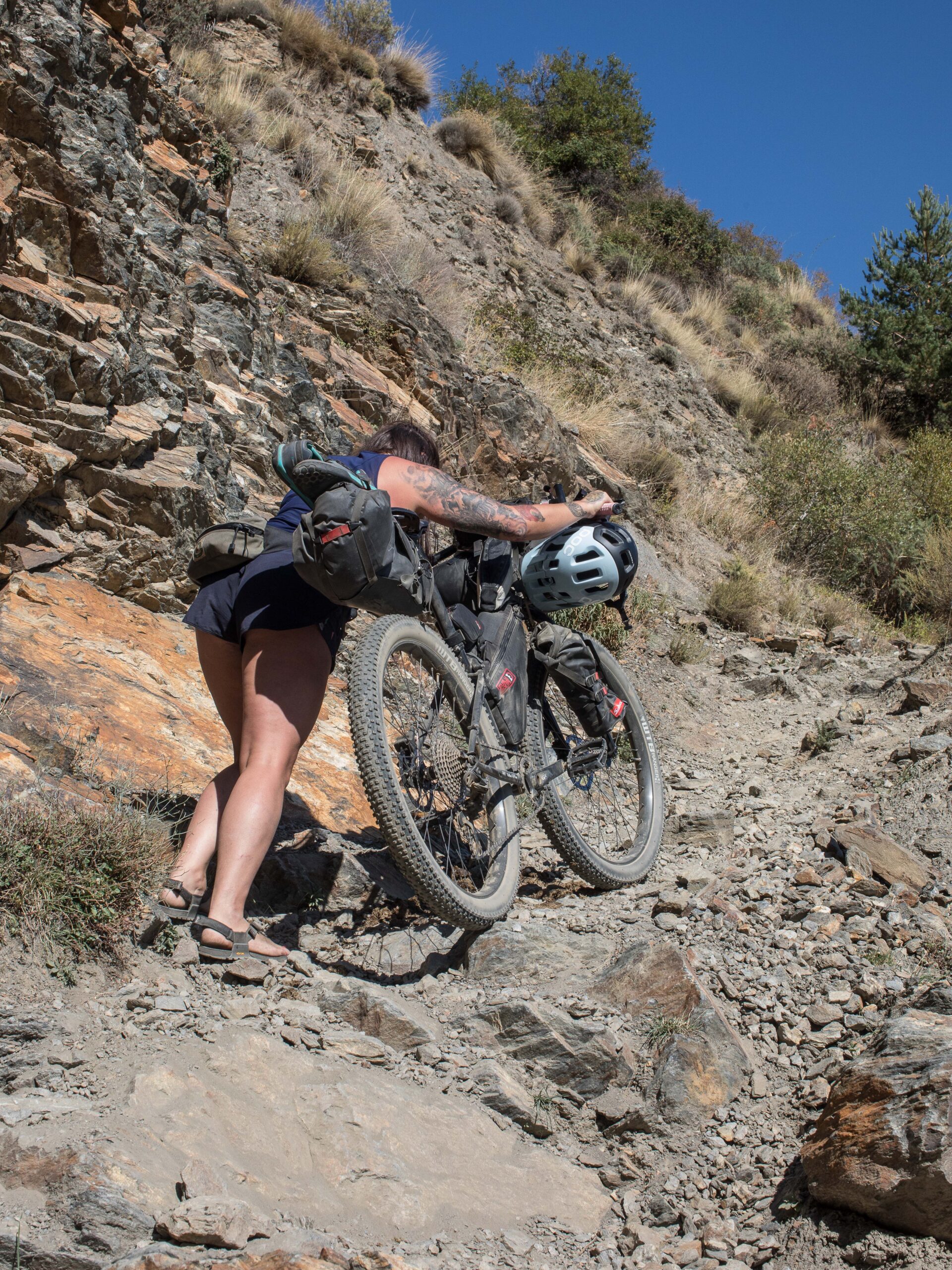
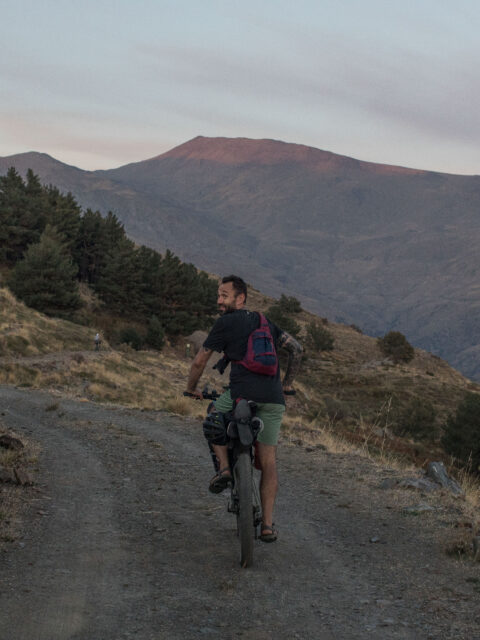
As the climate crisis encroaches ever more on our lives, it is more important than ever to approach travel responsibly. Bikepacking is a fantastic way to explore remote landscapes whilst keeping your environmental footprint to a minimum. I appreciate that any trip requiring air travel is flawed from the start (I’ve been working towards offsetting my air travel footprint by making donations to some of the charities linked below). But taking your bike and wild camping overseas is still better for the environment than renting a car and staying in a hotel. If the pandemic has taught us one thing, it’s the value of localised adventures, exploring nearby trails, camping in your local woodland, or perhaps taking your bike on the train to explore farther afield. This mode of transport doesn’t burn gasoline, causes minimal surface erosion, and creates little noise pollution. From a scientific perspective, the average person on a bicycle is a more efficient translator of energy per gram per kilometre than any other machine or animal. It’s crucial to stress this isn’t intended to demonise vehicle travel; I love exploring in my truck, but it is another benefit to this form of overlanding.
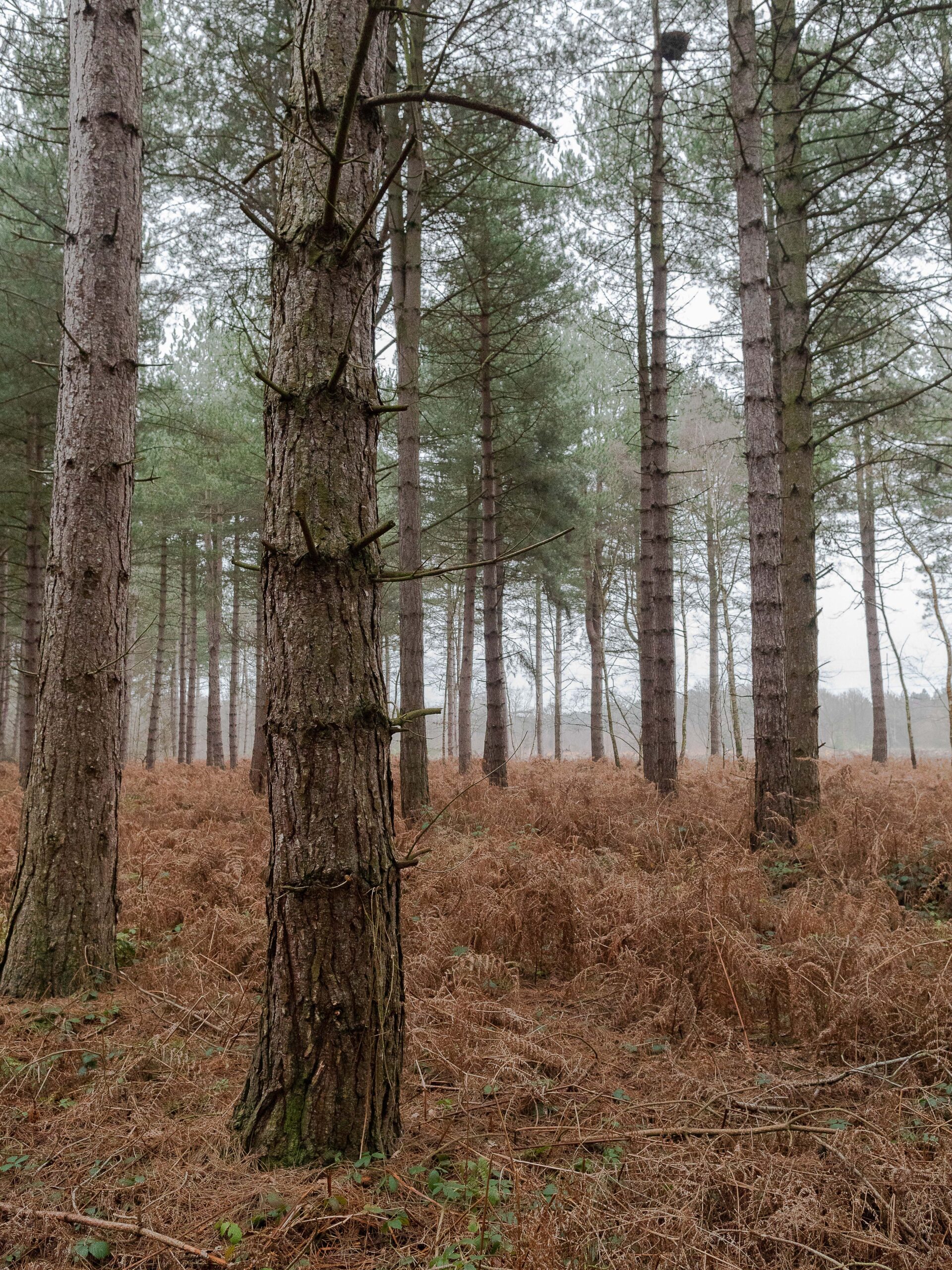
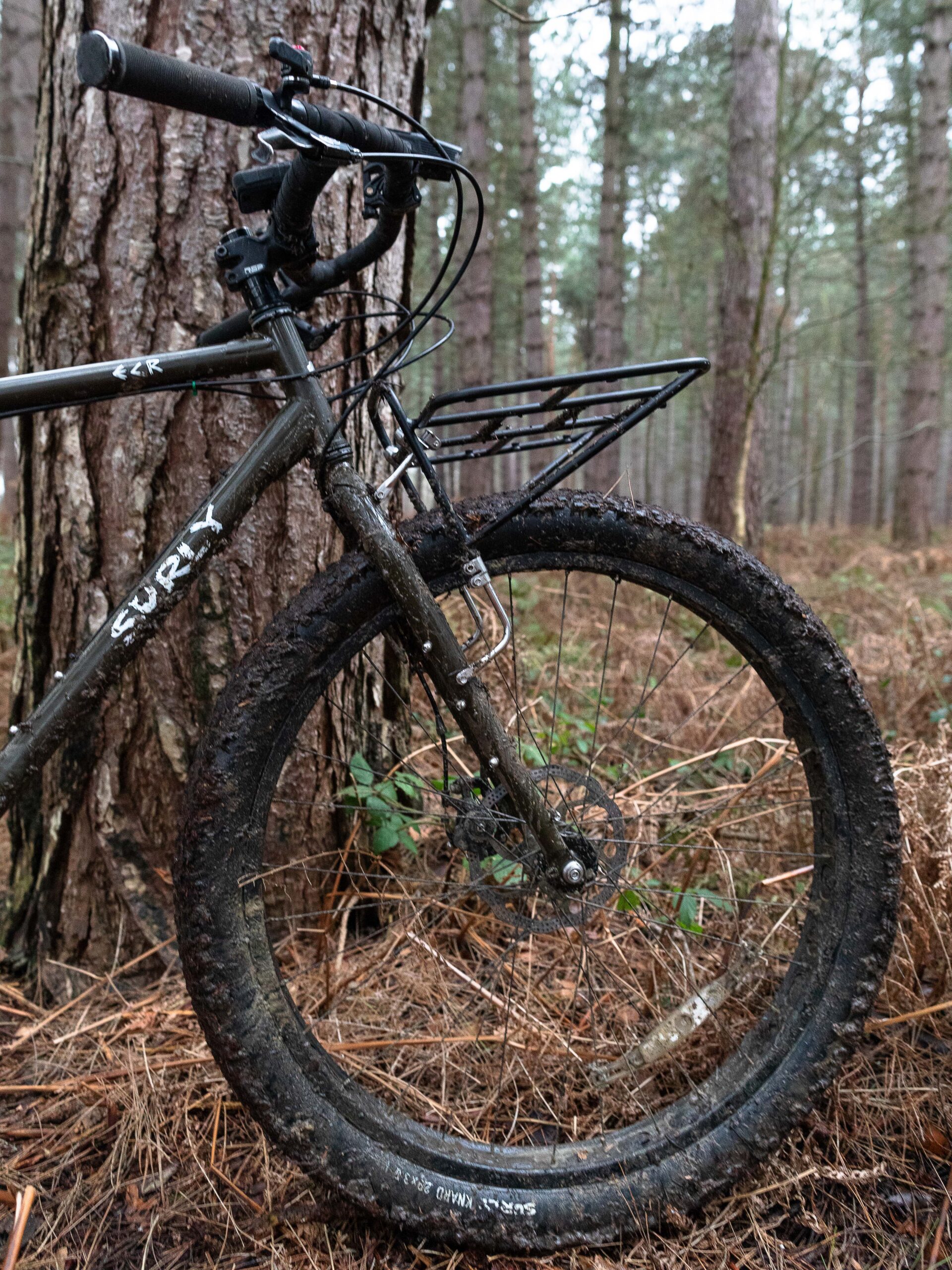
Vehicle overlanding requires a significant amount of logistics to travel internationally and often deep pockets. One of the most exciting aspects of bikepacking is the ability to simply box the bike/gear, book it as additional luggage on a commercial airline, and travel anywhere in the world. Once you land, assemble the bike, load your equipment, and you’re ready to go (no extensive paperwork or delays at the dock to worry about). It’s generally simple, cost-effective, and providing baggage is not lost en route (it does happen), seamless. Convenience is one of the primary reasons I reserve many overseas adventures for bikepacking. It’s hugely satisfying to have all you need for an epic overlanding adventure in a bike box (some airlines even fly bicycles for free) and one checked bag. On the topic of portability, there’s no other mode of transport that can be wheeled around pedestrian areas whilst having all your possessions to hand.
As a passionate photographer, I love taking time off the bike to explore quaint mountain villages, old cities, or other interesting built-up areas. The bikepacker can easily push their bike down crowded city streets, taking photos as they go, enjoying traditional food, and meeting the locals. If you’re travelling in a larger vehicle, it can be hard work navigating urban areas, and then it is often a challenge to find suitable/safe parking to leave your truck for the day. Additionally, the bicycle is somewhat incognito and can quietly explore back streets or be pushed alongside crowds without drawing too much attention. This is nice for taking candid lifestyle photos and blending in with the hustle and bustle. It does have its limitations, of course; if you want to enter a museum or simply leave the bike for any length of time, you can’t realistically remove all equipment, making it vulnerable to theft (this is where riding with others makes life easier).

If there’s one thing better than bikepacking alone, it’s riding with friends. Overlanding with multiple vehicles is a lot of fun; I’ve done it many times, and it’s fantastic. Nevertheless, there is something about struggling together on bikes incites feelings of camaraderie and achievement. Furthermore, thanks to the portability of the bicycles, it’s easy to organise epic overland trips with close friends all over the world (those of you who read my Sierra Nevada piece will note we met in Spain, despite being based in the Arctic Circle, Minnesota, and Scotland). It’s also easier to ride alongside each other, sharing the experience and generally relishing the slower pace of travel together. I’ve found bikepacking trips have brought me even closer to my friends. If there’s one thing as varied and vibrant as the personalities on these trips, it’s the bikes themselves.
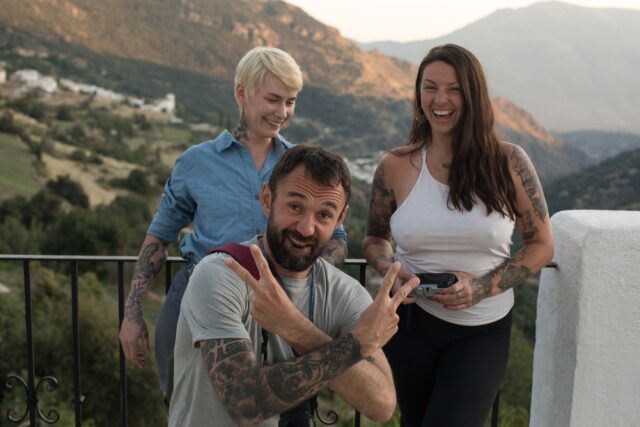
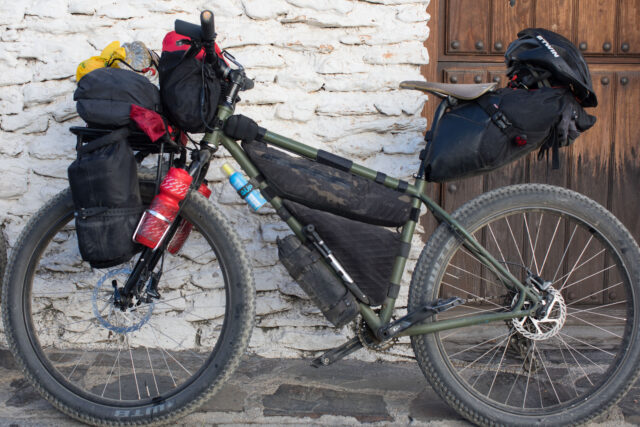
Bicycle touring has always been a popular mode of travel, but the traditional four-pannier racer became somewhat generic and lacking in charisma (even if I still love this approach to touring). Bikepacking came along, injecting the sport with a new lease of life (something you can read about in my Introduction to Bikepacking), and now there are as many interesting bikes/setups as there are riders. If you’re someone who loves beefed-up overlanding vehicles, then there’s a good chance you’re going to enjoy these all-terrain expedition-ready, bicycles. There are now hundreds of brands creating exciting bikes designed with bikepacking in mind, and even more companies manufacturing clever bags/racks to carry the equipment necessary for pedal-driven exploration. The extensive choice of bikes, alongside the opportunity for modification and custom baggage, makes building your dream bikepacking rig a highly addictive and rewarding process.
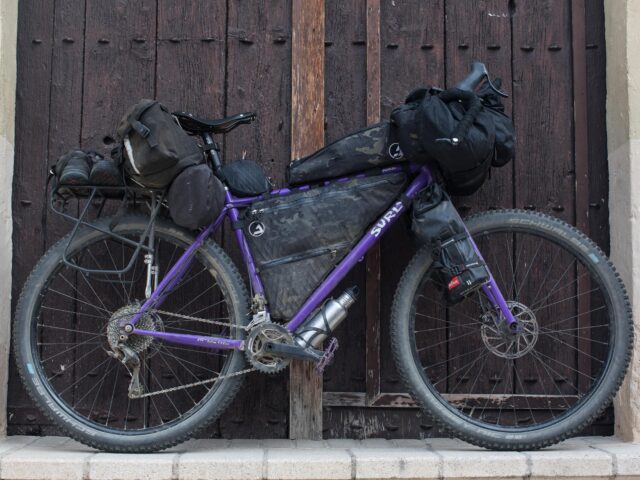
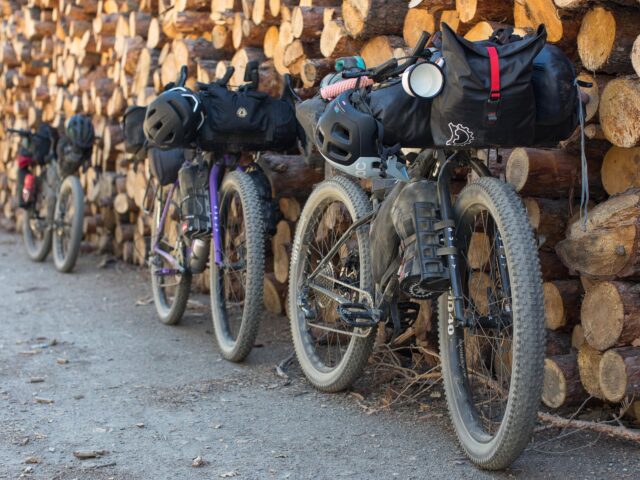
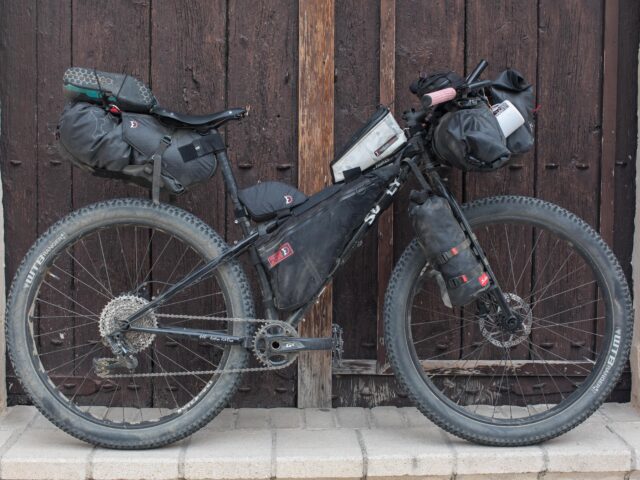
The bicycle, arguably the “forgotten overlander,” is all the exploration thrills you could ever hope for at a price point that’s more accessible. The portability of the bicycle makes it arguably the easiest overland rig for transporting around the world and makes international adventures relatively ideal. The go-anywhere capability of plus-sized bicycles, matched with a streamlined bikepacking bag/rack setup, ensures travellers can tackle trails previously limited to hikers whilst offering the ability to efficiently pack more provisions than a backpacker for off-grid exploration. If you’re interested in bikepacking and considering incorporating this mode of travel into your overlanding calendar, then check out the resources linked below, or feel free to ask a question in the comments section, and I’ll get back to you.
Resources
Offsetting carbon footprint:
carbonfootprint.com
myclimate.org
flygrn.com
Previous Articles:
Bikepacking Introduction
Tips for your first Bikepacking ride
Kitchenware
Clothing recommendations
Bedtime accessories
Bikepacking bags


